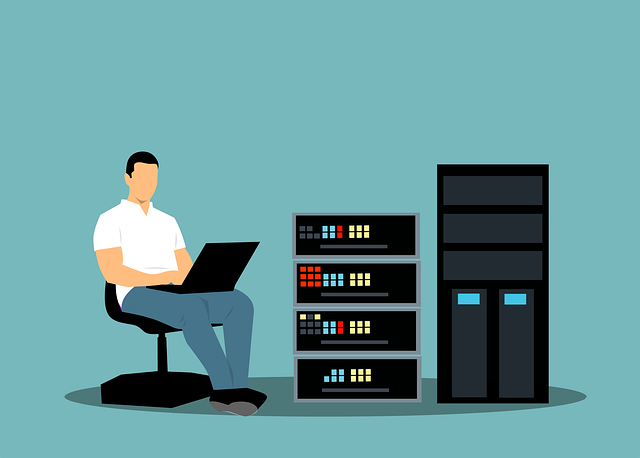Demystifying Data Storage Security – Understanding Your Data’s Security
Data is the lifeblood of organizations today. Given the new types of cyberattacks and the frequency of them, safeguarding your data in the organization is no longer only an IT department concern, everyone has to be proactive and informed.
This article will break down the basics of data storage security. And empower you to protect company assets as well as your personal information by making informed choices that reduce risk.
Table of Contents
The Different States of Data
Understanding how your organization’s data exists at different moments is crucial for ensuring security measures. So, let’s break this down:
Data at Rest
This is your stored data, i.e., the files that are present on servers, databases, and even backups that are sitting on the shelf. Encryption is your best friend here. Even if stored data is stolen, the encrypted data will become unreadable without the right key, emphasizing the importance of secure data storage.
This mandates strong encryption across ALL storage, removing the “easy target” factor.
Data in Transit
This is the data that is on the move — like emails, file transfers, or accessing cloud services. The secure channels are non-negotiable. To protect the data in transit, you will have to ensure the following:
- Enforce HTTPS for web traffic.
- Mandate VPNs for remote access.
- Use encryption for sensitive email communications.
- Train employees to spot suspicious links or file-sharing requests – one click can expose data in transit.
Data in Use
This is when data will be actively processed; for instance, take the spreadsheet that you will be editing or the CRM software that you will be working on. You have to understand this is the toughest state to secure. So, you will have to prioritize the following measures:
- Strong antivirus/malware protection is vital.
- Limit who has access to machines when working with confidential data.
- Consider “need to know” policies. That is not everyone in the organization needs to have access to everything. This will minimize risk even if one account is compromised.
Layers of Storage Security
Robust data security will rely on multiple, overlapping defenses. For instance, let’s examine these layers:
Physical Security
Data Centers: You will have to adapt strict access controls, like biometrics. Additionally, you will have to consider guards and environmental monitoring, for scenarios like fire, etc., and redundant power supplies to minimize downtime are standard in data centers.
Personal Devices: Some other simple but crucial points to consider are: not leaving your laptop unattended, encrypting the hard drives, and device-tracking software in case of theft. For instance:
Code Example: Enabling Device Encryption
Windows: You have access to the built-in BitLocker. For this, search “Manage BitLocker” to enable it for specific drives.
macOS: You have a similar encryption software, i.e., FileVault encryption. You can find it within System Preferences -> Security & Privacy
Network Security
Firewalls: Be it hardware or software, these filter traffic, and block unauthorized connections. IT teams can configure the rules based on your organization’s needs.
Home Users: Your router likely has a basic firewall. Just ensure it’s on, and the firmware is updated. Try to avoid shady public Wi-Fi, and use a VPN for extra protection.
User Authentication
Password Weaknesses: People reuse passwords or choose easy ones. So, make it a policy and enforce complexity rules. Do not allow common words as passwords and ensure to educate users.
Two-Factor Authentication (2FA): Huge security boost! Adds a second factor (SMS code, authenticator app) that stolen passwords alone can’t bypass.
Limiting Admin Rights: If users do not need full admin access, you do not have to give it! This will lessen the impact if their account is compromised.
Code Example: Implementing 2FA (Conceptual)
This will vary wildly by system but often involves:
- Enabling 2FA on the service: Account settings usually.
- User Setup: Scan the QR code with an authenticator app, or receive SMS enrollment codes.
- Login Changes: The user enters the password AND the generated 2FA code upon login.
All in all, you will have to ensure that the security is an ongoing process. You will have to perform regular vulnerability scans, software patching, and employee training as the initial setup of these layers!
Threats: Beyond the Cliche Hacker
While only the targeted cyberattacks grab headlines, it’s often more mundane threats that cause organizations the most harm. Here are some commonly overlooked risks to avoid:
Accidental Loss
Unencrypted Devices: A lost laptop or stolen phone without encryption means easy access to potentially sensitive data. So, mandate encryption on all company devices with no exceptions.
Unpatched Systems: Software updates often patch security holes. And the outdated systems are invitations to trouble and even the low-skilled attackers. And enforce strict update policies across the organization.
Insider Threats
Disgruntled Employees: Someone intentionally leaking or corrupting data in your organization can be crippling. You will have to limit the access on a “need-to-know” basis and monitor privileged accounts to mitigate such risk.
Bribes or Social Engineering: many reports came up where employees were tricked into giving up passwords or access. And this is more common than you think. Security awareness training is key here, not just tech solutions.
“Force of Nature” Risks
Fire, Flood, etc.: Even with perfect cybersecurity, disaster can happen. You will need offsite backups (not just sitting in the same building!) that can become a lifeline to recover data.
Hardware Failure: Drives crash, it’s a fact of life. You will have to include Redundancy for vital data and a tested disaster recovery plan to minimize downtime even if a primary storage system fails.
Many of the breaches that have happened were because of simple errors compounded by a lack of preparation. So, ensure to include regular risk assessments and drills to keep your organization ahead of these threats.
It’s Not Just About Tech – Your Role Matters
The best security systems can be undermined by simple human error. Taking active ownership of your role is a powerful defense. Here’s where to focus:
Password Smarts
One Site, One Password: If you use the same password on all sites, this means it will compromise them all. It’s a pain, but essential for your important accounts.
Length Matters: Longer is better than just random characters. So, aim for phrases over single words, given it is easier to remember and harder to crack.
Conclusion,
Data security is an ongoing challenge and there is no single solution for this problem. You will have to understand the different vulnerabilities and different layers of protection and the role your actions will play.
Yes, there is no perfect security simple. But by simply being proactive and informed, you can dramatically decrease the odds of your data ending up in the wrong hands.









